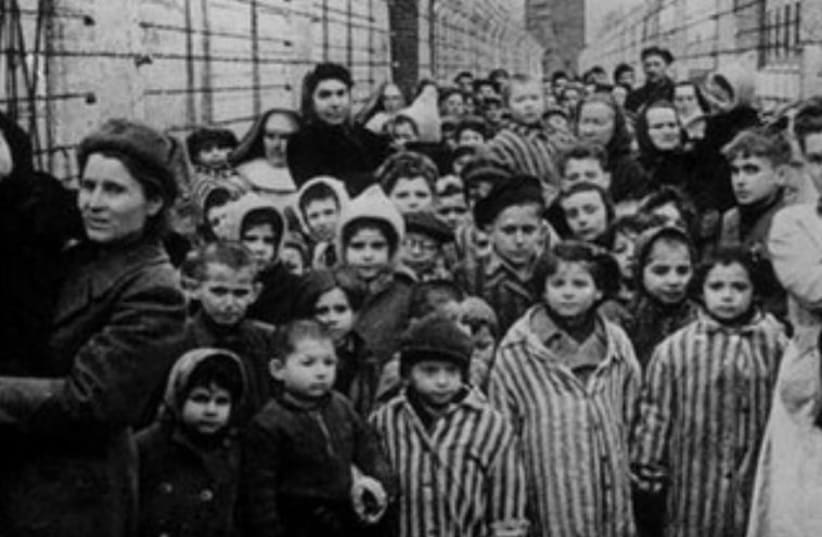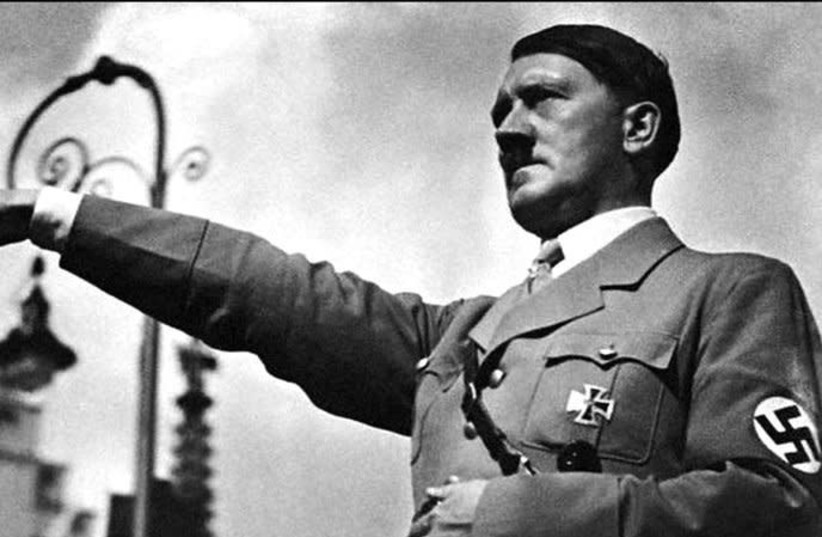Picture a cute-looking, 6 1/2-year-old girl with curly braided hair. She is standing on a sidewalk, on a cold, dreary day in Leipzig, Germany, together with her parents and my wife and me. My granddaughter Vivi is staring intently at a 75-year-old worker, kneeling on the ground. He is digging a hole through the pavers to install several 4” x 4” brass plaques mounted on cement cubes — memorials to relatives who perished at the hands of the Nazis more than 80 years ago.
In February, we traveled 9,500 miles round-trip to dedicate 12 Stolpersteine plaques in memory of relatives I never knew, or even knew I had. (All 16 of my family members would have stood with us that day, but Germany’s airport worker strike canceled the others’ flights.) They were just some of my late father’s aunts, uncles and cousins who were murdered in the Holocaust, and we regarded the ceremony as a pseudo-levaya, a quasi-funeral that would be the final act of respect and farewell Hitler had denied my relatives.
Approaching forgiveness
I couldn’t have imagined, 60 years earlier when I first visited Germany, that I would ever return in a spirit approaching forgiveness, or that I’d feel a deep connection to a country that was once synonymous with brutality, pain, humiliation and suffering.
Stolpersteine, a German word meaning “stumbling block,” refers to a design brilliantly conceived by the non-Jewish German artist Gunter Demnig in the early 1990s. Installed in front of the homes where innocent Jewish victims last freely lived, the brass plaques simply and artistically memorialize, honor and personalize those brutally persecuted. On each plaque are engraved the victim’s name, dates of birth and death. As Demnig once said, “A person is only forgotten when his or her name is forgotten.” Hence, 100,000 of his plaques throughout Europe remind us that Jews are part of a shared history, and a common memory.
Whether consciously or not, the “stumbling pedestrian” instantly recalls the extraordinary evil unleashed by ordinary people, on once vibrant Jewish communities, and the terrorized Jewish neighbors who lived within them. This evil was driven by a blind loyalty to a gratuitous hatred of “the other,” meaning non-Aryans.
Who were these relatives I recently memorialized? Recently uncovered documents suggest my relatives were all decent, law-abiding citizens who contributed to Leipzig’s economy, enriched its cultural life and strengthened its social fabric. Sadly, being model citizens did not spare them from torturous fates.
One of those relatives, Elfriede Meyerstein, my paternal grandfather’s sister, was born Feb. 27, 1871 in Breslau. At 20, she came to Leipzig where her husband Menny ran a textile trading company with his family. They lived at the same address for many years. By 1931, after Menny’s death, she lived with her daughter Käthe Huth.
The Nazis, once in power, immediately expropriated Elfriede’s assets, comprising foreign stocks meticulously accumulated by Menny. The Nazi “Ordinance on the Registration of Jewish Assets” of April 26, 1938, forced her to surrender those securities to the state. In 1939, shortly after Kristallnacht on Nov. 9-10, 1938, the Nazis collected a “reimbursement tax” as “atonement,” from Elfriede and the rest of Germany’s Jewish community, for the damage Nazis did that night.
Just prior to her Sept. 19, 1942 deportation to Theresienstadt at age 71, Elfriede was forced to sign a “home purchase agreement,” the Nazis’ final act of expropriation. The document falsely and cynically promised her a “retirement home,” with free lifetime accommodation, food and medical care, but paid for by her, in advance. The Reich Security Main office confiscated 65,000 Reichsmarks ($300,000 in today’s currency). Her “retirement home” was in a ghetto with disastrous hygienic conditions, starvation, and no medical care. Elfriede died one month later.
After considerable soul-searching and three visits to Germany, spaced over 60 years, my attitudes and feelings today, vis a vis Germany and its citizens, are dramatically different from when I first visited in 1966.
Then, I came with unprocessed emotional baggage. In 1939, my father, Ralph Meyerstein, fled Dusseldorf and my mother, Cecily Geyer, fled Dresden, both for England. My paternal grandparents, Alfred and Meta Meyerstein, were deported from Dusseldorf on Nov. 8, 1941, to Minsk, where they were killed. My maternal grandmother, Salcia, was deported to Riga in January 1942; in November 1943 she was sent to Auschwitz and murdered.
My parents met in Ware, a small town north of London, where some German Jews took refuge. They moved to London where they married during the Blitz and we came to the United States in December 1947.
As an only child, I shouldered much of my parents’ guilt over abandoning their parents, even though it was their parents who, thankfully, had urged them to flee Germany. When retelling their survival story, my eyes still well up with tears, revealing a lifetime of trauma I’ve absorbed on their behalf. That first visit felt almost adversarial in tone. It was I, representing my parents’ personal losses and those of the Jewish people, versus Germany and Germans. I reacted viscerally to hearing guttural Deutsch being spoken. I eyeballed Germans on the street and asked myself: How old are they? Did they commit heinous crimes against my family and my people?
By 2018, when I dedicated a Stolpersteine in my maternal grandmother’s memory, my judgmental attitudes and harsh feelings had softened. Maybe I realized that 75 years later, the ordinary citizen on the street could not be held responsible for the carnage of the Holocaust. Also, working with non-Jewish German volunteers in planning the ceremony showed me their humanity, sensitivity and outright remorse for Nazism’s impact on my family and their German state. Their kindness was an atonement for a past not of their making.
My visit in February shed further light on my evolving relationship with Germany and Germans. Today’s Germany is doing teshuva, or repentance, by strengthening democracy, creating an inclusionary society, responding resolutely to far-right extremism, educating its young about the Holocaust, offering sanctuary to Jews fleeing Russia and Ukraine and being a true friend to the State of Israel. It also is supporting Jewish communal institutions, paying reparations to Israel, to individual victims and their descendants.
My relationship became much more nuanced upon learning that Germany was once home to five generations of my family, as far back as 1760, in the small town of Grobzig where Matthias Nathan Meyerstein was born. On our visit to its mid-17th-century Jewish cemetery, I gazed incredulously at the graves of Meyersteins. I saw schutzbriefen, documents issued by the reigning duke, that assured my ancestors protection, commercial privileges and religious rights. In the old Leipzig Jewish cemetery, I visited 12 relatives’ graves from the 1800s and 1900s, which reflected much about their secure socio-economic status.
Before my retirement, I never knew that Grobzig or Leipzig or other towns were in my family’s history. This discovery led to one conclusion: Unquestionably, 1933 to 1945 was a tragic anomaly in human history, and especially Jewish history. However, I must also gratefully acknowledge the Germany that sustained my family for over 300 years, and Jewish communal life for 1,700 years.
Nazi Germany’s ill-treatment and intolerance of “the Other” still affects me today as I mourn my relatives’ death. On the other hand, I feel heartened by this sentiment written by a non-Jewish German who funded research about my family: “For me, as I am part of this country and its history, it will be a never-ending task to find ways to deal with this horrible past and most importantly, never to forget,” she wrote.
Navigating this complex relationship with Germany and Germans is intellectually and emotionally messy for Jews. My engagement with “the Other,” however, has been profoundly satisfying. The views and opinions expressed in this article are those of the author and do not necessarily reflect the views of JTA or its parent company, 70 Faces Media.

